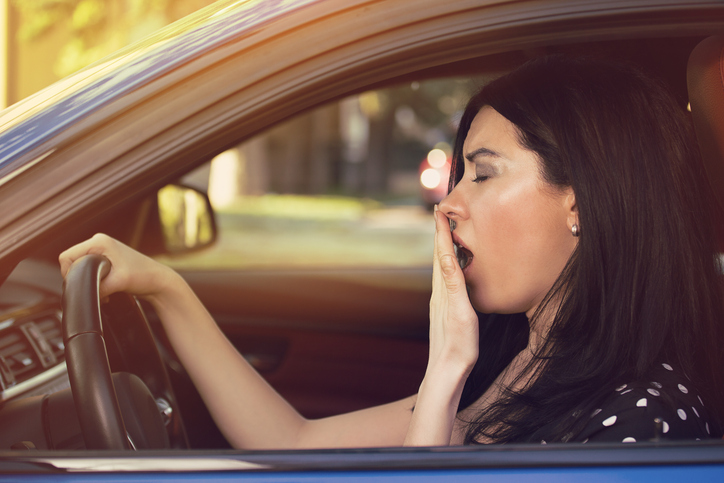You’re already aware of the dangers of driving while intoxicated, but do you know driving while drowsy can impair driver judgment and reaction time just like alcohol and drugs? More than 11 million people admit they have had a crash or near crash because they fell asleep at the wheel. And everyone can be affected—men, women, experienced drivers or those just graduated from driver’s education class.
The National Highway Traffic Safety Administration estimates that 100,000 police-reported crashes each year are caused by drowsy driving. The results of those crashes are even more eye-opening with 1,550 deaths, 71,000 injuries and $12.5 billion in monetary loss.
Who’s at Risk?
Anyone who slips behind the wheel of a vehicle is at risk of falling asleep while driving. However, some people are more at risk than others.
Teen Drivers:
Shifting schedules, changes brought on by puberty, and time spent on homework and extracurricular activities can affect sleeping patterns. Nearly 50% of high school students get less than eight hours of sleep on school nights, and nearly one quarter fall asleep in school.
Night Shift Workers:
People who work overnight or handle rotating or double-shifts are six times more likely to be involved in drowsy driving crashes. Experts recommend 7-9 hours of sleep per night for adults. A “sleep debt” builds up when you don’t get enough sleep and must be repaid—often at unexpected times including while driving.
Business Travelers:
Those who travel a great deal for work often suffer from jet lag and crossing time zones, which can affect decision making and reaction time.
Signs of Sleepiness
You may not be very good at knowing when you’ll fall asleep, but there are several warning signs to let you know when you’re too tired to drive, including:
- Yawning or rubbing your eyes repeatedly
- Drifting from your lane
- Tailgaiting
- Missing signs or exits
- Feeling irritable or aggressive
- Showing slow reaction time and poor judgment
- Having trouble keeping your eyes open and head up
- Experiencing microsleeps—short 2-3 second sleep episodes
Studies reveal that being awake for more than 20 hours can have the same effect as a blood alcohol concentration of 0.08%, the legal limit in all states. People with mild to moderate sleep apnea actually performed worse than those with a 0.06% BAC. And drinking while sleep deprived can only intensify the effects on your body. For example, with only 4 hours of sleep, one beer can have the impact of a six-pack.
Prevent a Drowsy-Driving Crash
The best way to avoid a driving-while-drowsy crash is to get adequate sleep on a regular basis. Additionally, seek treatment if you suffer from a sleep disorder such as Obstructive Sleep Apnea (OSA) or insomnia. To keep you, your passengers and others on the road safe, follow these Do’s and Don’ts:
Do:
- Pull over to a safe area if you notice any signs of fatigue
- Take a 15-20 minute nap to re-energize before driving
- Drink caffeine (2 cups of coffee can increase alertness for several hours)
- Drive with a friend alternate diving duties
Don’t:
- Drive if you are tired or on medication that may cause drowsiness
- Drive at times you would normally be sleeping
- Drive after drinking even a small amount of alcohol
If you notice signs of sleepiness, it’s smart to make alternate plans so you can avoid driving. Ride with a friend or call taxi. Your decision could save your life and the lives of others on the roadway.
November 5-12, 2017 is National Drowsy Driving Prevention Week. To learn more about the potential dangers of driving while drowsy, visit the National Highway Traffic Safety Administration website.

Patrick M. is Editorial Director for the always expanding DriveSafe Online library of courses. With over two decades of experience developing award-winning training, he now focuses on innovating online driver safety training. Pulling from his background in journalism, he steers the wheel behind the creation of top-tier content that promotes a better journey—whether on the digital highway of learning or the real roads we travel every day.
